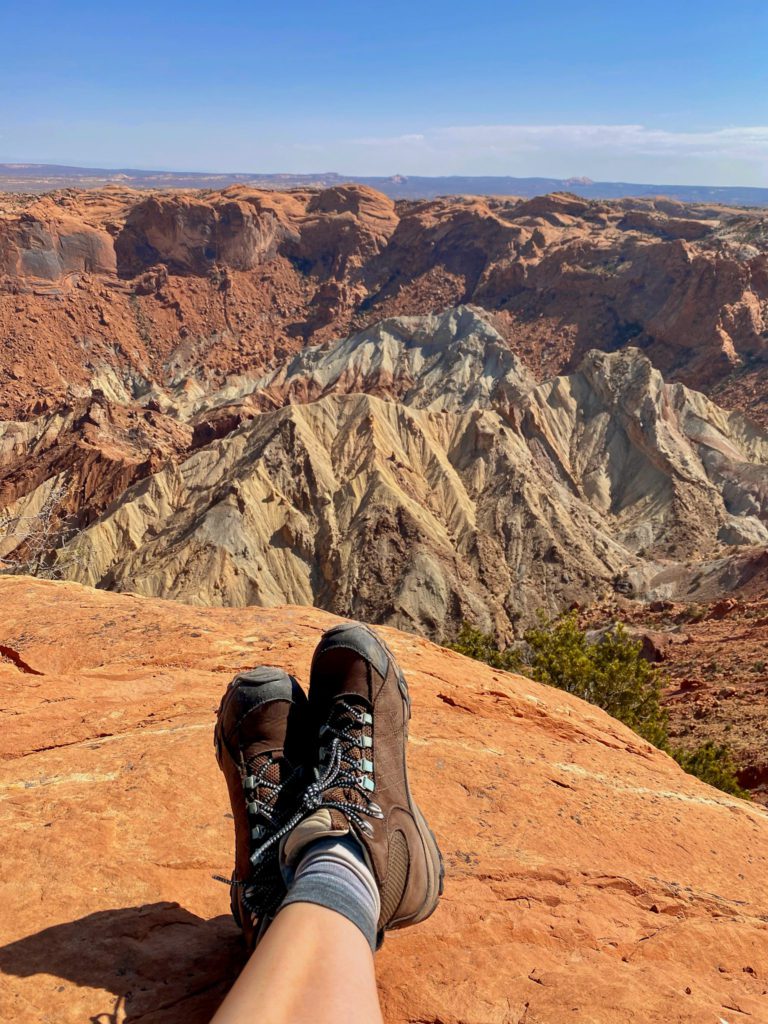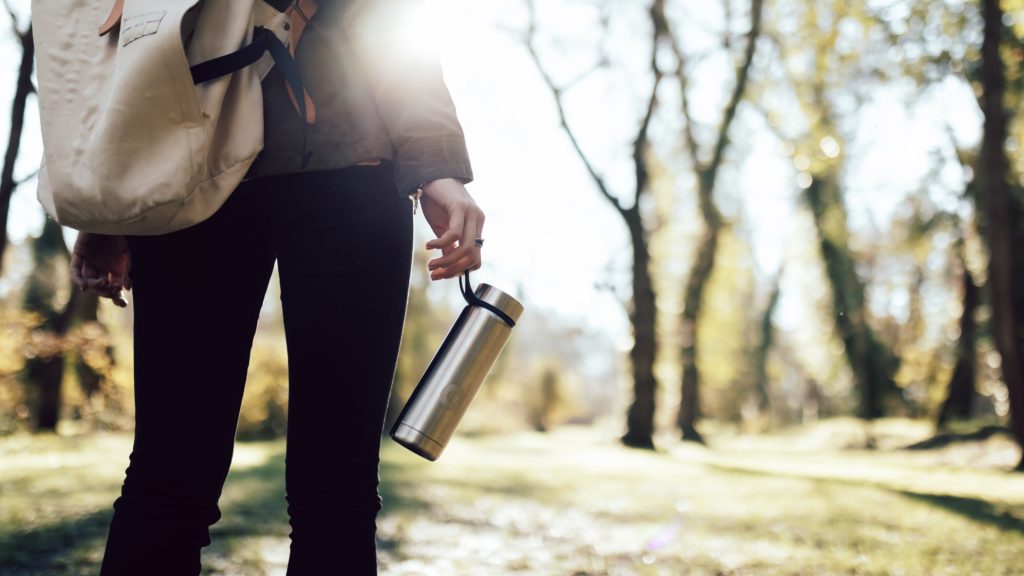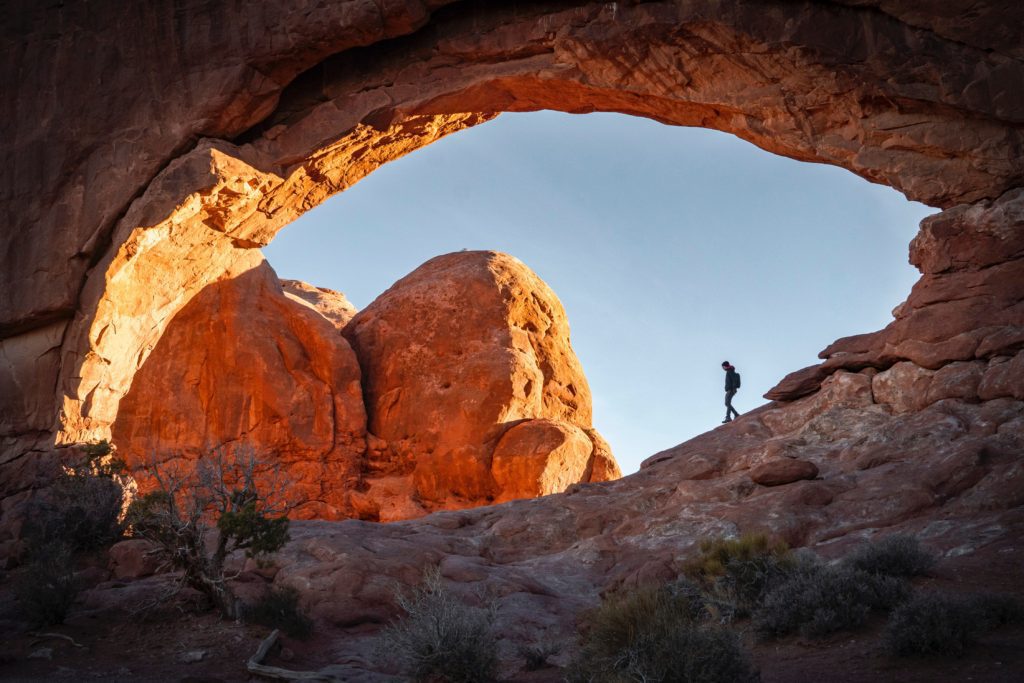
Hiking in the summer months or in warmer climates can provide an opportunity to see some beautiful parts of the world. If you’re well prepared, you can enjoy these hikes with ease (and probably a little sweat). Or a lot of sweat if you’re hiking in Utah in the middle of summer like me! If you decide to brave the heat, I’ve compiled a list of helpful hot weather hiking tips to make your journey preparations a breeze.
This post contains affiliate links, and I may earn a small commission when you click on the links at no cost to you.
Hot Weather Hiking Tips Overview
- Hydrate
- Dress the Part
- Accessorize with Sunglasses & Hydration Pack
- Wear Sunscreen
- Plan When to Hike
- Plan Where to Hike
- Make Stops in the Shade
- Eat Properly
- Pack Properly
- Listen to Your Body
If you need a comprehensive packing list for all your travel needs, I’ve got you covered! I created the ultimate packing list for your upcoming adventures, including carry-on essentials, toiletries, clothing, and location-specific items.
Hydrate
I’ll list one of the most obvious hot weather hiking tips first. If you venture out on any hike, you should always be properly hydrated. This is even more critical when hiking in extreme heat. The general rule of thumb is to drink half a liter of water every hour. You may need to increase your water intake during more strenuous hikes in the heat.
Packing an appropriate water bottle or hydration pack is extremely important. For your water bottle, try to find one that is double wall insulated stainless steel, such as a Hydro Flask. These types of water bottles keep your water cold throughout the day.

Dress the Part
Clothing
One of the top hot weather hiking tips you’ll find is wearing light-colored clothing. The reason being is that lighter colors don’t absorb the heat. Loose, breathable clothing is usually recommended. However, that can be a personal preference. Based on my experience, I prefer biker shorts for the additional support and lack of potential chafing in the thigh region. IYKYK.
Breathable, quick-drying fabric is key. Look for clothing made out of nylon or polyester. You can wear some cotton items since they absorb water and cool you as it dries, but it’s typically not recommended.
Finding clothing that won’t cause chafing is something I learned the hard way on one of my first hot weather hikes. For my tank top lovers out there, be mindful that your backpack could rub against your exposed skin and cause irritation. I speak from experience, as this can quickly make an unforgettable trip unbearable. If possible, aim for short sleeve shirts or tank tops with a broader shoulder, covering the areas where your backpack hits your frame.
Don’t be afraid to cover your shoulders, arms, and neck with the proper gear during hot weather hikes. This will help keep those with sensitive skin safe from an uncomfortable sunburn.
Socks
While cotton clothing is okay, cotton socks are a definite no-no. Seriously, don’t do it. Merino wool socks are the best option for hiking in hot and cold weather. The reason merino wool is commonly suggested is due to its breathable fabric. Bonus – merino wool is naturally antimicrobial, aka odor resistant! You can opt for a thinner pair of wool socks; just make sure you don’t have excess room in your hiking boots, or it could cause blisters.
Hats
Hats are another fantastic option to help protect your face and shoulders. I’m a huge fan of covering my face from the sun since I tend to burn very easily. Therefore, they are a must-have item when I venture outdoors. I often gravitate towards a traditional baseball-style cap, but there are plenty of options that offer wider brims to cover the back of the neck and shoulders.
Accessorize with Sunglasses & Hydration Pack
For those with sensitive eyes, a good pair of sunglasses can really benefit you on a sunny hike. Look for a pair that is durable, light on the face, and ideally offers polarized lenses.
Hydration packs are a convenient way to carry and drink water while on the go. Like any pack, you want to ensure that it fits your body and the amount of water you need for your hike. There are a variety of options for any outdoor activity!
Wear Sunscreen
It seems like a no-brainer, but I’ll say it anyway – you should always wear sunscreen when hiking. In the more balmy temperatures, a sunburn is not only painful, but it’s also dangerous if you begin to feel fatigued or spike a fever. My favorites include Supergoop for my face and Neutrogena for my body.

Plan When to Hike
Avoiding the heat of the day (12:00 noon – 3:00 pm) can make a substantial difference in your hiking experience during the warmer months. If possible, try beginning your hike before sunrise or near sunset. Not only will you beat the heat, but you’ll also experience the magic of a hike during golden hour.
Plan Where to Hike
Try to find trails or national parks offering shaded areas such as trees or canyon wall coverage when planning your trip. Thus avoiding constant sun exposure while on the trail. Another option is to hike near a body of water to take advantage of the breeze.
Make Stops in the Shade
Be sure to make stops in the shade if available to give your body a much-needed respite from the sun. This is an excellent opportunity to drink water, reapply sunscreen, and replenish with a snack.
Eat Properly
Beginning your day with a filling breakfast before you start the hike will do wonders for your energy levels. Keeping your body fueled during a hike is extremely important too. The food you’ll always find in my pack includes cliff bars, dried fruits, and nuts.
Pack Properly
No one wants to lug around a heavy backpack, but not having the right gear and supplies with you could be detrimental. I’ve included the essentials below:
- Water bottle
- Food and snacks
- Sunscreen
- Hat
- Sunglasses
- First aid kit
- Chapstick
- Flashlight or headlamp
- A knife or multitool
- Extra clothes or layers
- Extra socks
- A plastic bag for your used clothes
- Portable cell phone charger
- Hand sanitizer
- Bathroom essentials
- Bug spray
Ready to hit the trails? Check out my Complete Hiking Packing List post that outlines the hiking ten essentials you need in your pack for a safe journey outdoors.
Listen to Your Body
Hiking, in general, can open you up to various injuries. Hiking in the heat amplifies those risks, so it’s best to listen to your body. What to watch for:
Heat Stroke
The most serious of the bunch. Symptoms include headache, confusion, vomiting, loss of consciousness, hot, dry skin or profuse sweating, seizures, and high body temperature.
First aid: Call 911 to seek medical attention. Move to a shaded, cool area and remove outer clothing. Keep hydrated. Cool down quickly with cold water; wet the skin, place cold wet cloths on the skin, or soak clothing with cool water. Circulate the air to speed cooling.
Sunburn
A painful way to put a damper on your day. Symptoms include red, warm, and tender skin, swollen skin, blistering, headache, fever, nausea, and fatigue.
First aid: Take aspirin or ibuprofen to relieve pain and headache and reduce fever. Keep hydrated. Limit further sun exposure until the burn has healed. Apply a topical moisturizing cream or aloe to the burn.
Dehydration
Regardless of the temperature, you should always be prepared with enough water for your hike. Symptoms include headache, confusion, fatigue, dizziness, light-headedness, dry mouth and/or a dry cough, high heart rate but low blood pressure, loss of appetite, flushed (red) skin, swollen feet, and muscle cramps.
First aid: Hydrate with water or a sports drink with electrolytes to replace lost fluids.
Blisters
Avoidable with the right shoes and socks! Symptoms include a painful and/or itchy bubble on your skin due to friction or heat.
First aid: Blisters often heal on their own without treatment. If needed, wash the area with soap and water. Keep the area clean and dry. Don’t puncture the blister, but if it bursts, place a bandage on the area to keep it clean.
Final Thoughts
Hiking in warm temperatures can be challenging, but with my hot weather hiking tips, you will be set up for success and an enjoyable (and sweaty) experience. If you have any questions or additional tips I may have missed, feel free to leave me a comment!






Leave a Reply